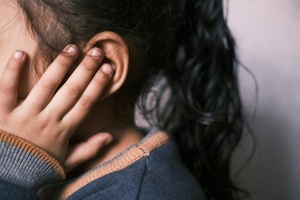With that in mind, Safer Internet Day (Tuesday, February 11) is the perfect way to get the school year off to its best start.
Created in 2004, and originally a European initiative, Safer Internet Day has grown into a global movement, with more than 180 countries now involved.
Here in Australia the E-Safety Commissioner leads the way, coordinating all of the awareness activities and providing educational resources with the aim of promoting a safer and more positive online experience for all.
“The theme for Safer Internet Day this year is ‘Together for a Better Internet’, and it really highlights that it’s not one person’s responsibility – it’s really a shared responsibility to create a safe online environment, Nicky Sloss tells EducationHQ.
Sloss is manager of the Education Sectors, Education, Prevention & Inclusion section of eSafety.
“So for schools in particular, eSafety really takes a back-to-school approach. It’s really the perfect time to consider prevention and support for students, for staff and for parents and carers, but really helping them with those skills and strategies that they’ll need all year round.
“The messages are around being informed about any kind of risk, taking action to stay safer, but also promoting those safer online experiences and help-seeking if they need to.”
Cyber bullying, online hate, gaming risks, digital literacy and information, image-based abuse, including sexual extortion, are ongoing issues and concerns everyday online, and Sloss explains that it’s important that everyone involved in school communities knows that eSafety is a place where help is available if required.
“Whether it’s educators, school leaders, students, families – we want them to know that they can reach out to eSafety, that it is a supportive organisation that can help them so that they know about both our prevention and that education, but also the report abuse portal button so they can come to us around any of those serious issues,” Sloss says.

“…our goal is really to have a champion in every school. The Commissioner often talks about boots on the ground, and the eSafety champions are a way for us to be able to see that,” Nicky Sloss says.
A primary goal of Safer Internet Day is to encourage schools to nominate a staff representative to join the esSafety Champions Network.
“We want all Australian schools to have an eSafety champion, that’s our goal,” Sloss says.
“So that’s someone in primary and secondary school that can really be a dedicated staff member who acts as a link between the school and eSafety.
“The Commissioner (Julie Inman Grant) often talks about boots on the ground, and the eSafety champions are a way for us to be able to see that.”
eSafety’s resources are second-to-none, up-to-date and tailored specifically to include teaching and learning activities, virtual classrooms, free professional learning for teachers, webinars for parents and carers, all researched and catered to by a network of trusted providers.
Schools can sign up early for access to resources designed to support activities in the classroom or for their school community on Safer Internet Day.
“So the virtual classrooms, I think, are a good place to start, and they’re free online webinar sessions for Years 3 and 4, and Years 5 and 6 students,” Sloss explains.
“We’ve also got some really good teaching and learning activities, so a link to curriculum that can also be used in wellbeing time in schools.
“We’ve got conversation starters that really help teachers, parents, and carers have the conversations with young people in a supportive and engaging way.
“And then also a whole range of research and practical strategies and resources to support digital literacy and online experiences.”
eSafety’s expert trainers are also getting busy delivering live online safety lessons to schools via virtual classroom webinars.
“These are really popular,” Sloss says.
“We offer them three times throughout the year, but Safer Internet Day is our biggest session for these.
“They’re offered on the day but also throughout the month of February, because we know that people might want to access them at different times.”
The virtual classrooms see highly skilled and experienced education trainers deliver sessions for which teachers can register.
“The kind of things that they’re looking at this year are around navigating online friendships safely and with respect, looking at investigating or critically analysing fake information and fake friendships online, and then also being able to recognise and respond to online harm,” Sloss shares.
“That also means reaching out for help if they need it.
Designed for those two particular primary-age groups, Years 3 and 4, and 5 and 6, the focus is on students acquiring practical skills, but also some strategies for teachers themselves.
“And the beauty of it is that we have the trainer deliver the session, but the classroom teacher can pause and there’s an opportunity to be able to facilitate discussion in the classroom, but then there’s a whole lot of resources that they can use after the webinar to really help them and also to share with families.”
Sloss says Safer Internet Day is really about taking some action, it doesn’t have to be huge, it might be just taking one step.
“Whether you’re a school leader or a teacher, a student or a parent or carer, there are lots of simple but meaningful ways to get involved in Safer Internet Day,” she says.
“And it might be through those classroom or wellbeing activities, it could be having conversations at home, it can be about encouraging staff to have safer positive online experiences.
“But at eSafety, we like to talk about the four R’s of online safety - respect, resilience, responsibility, and reasoning.
“It’s important that we include students in planning for the day and that we get them involved in eSafety.gov.au – afterall, it’s here to help.”














